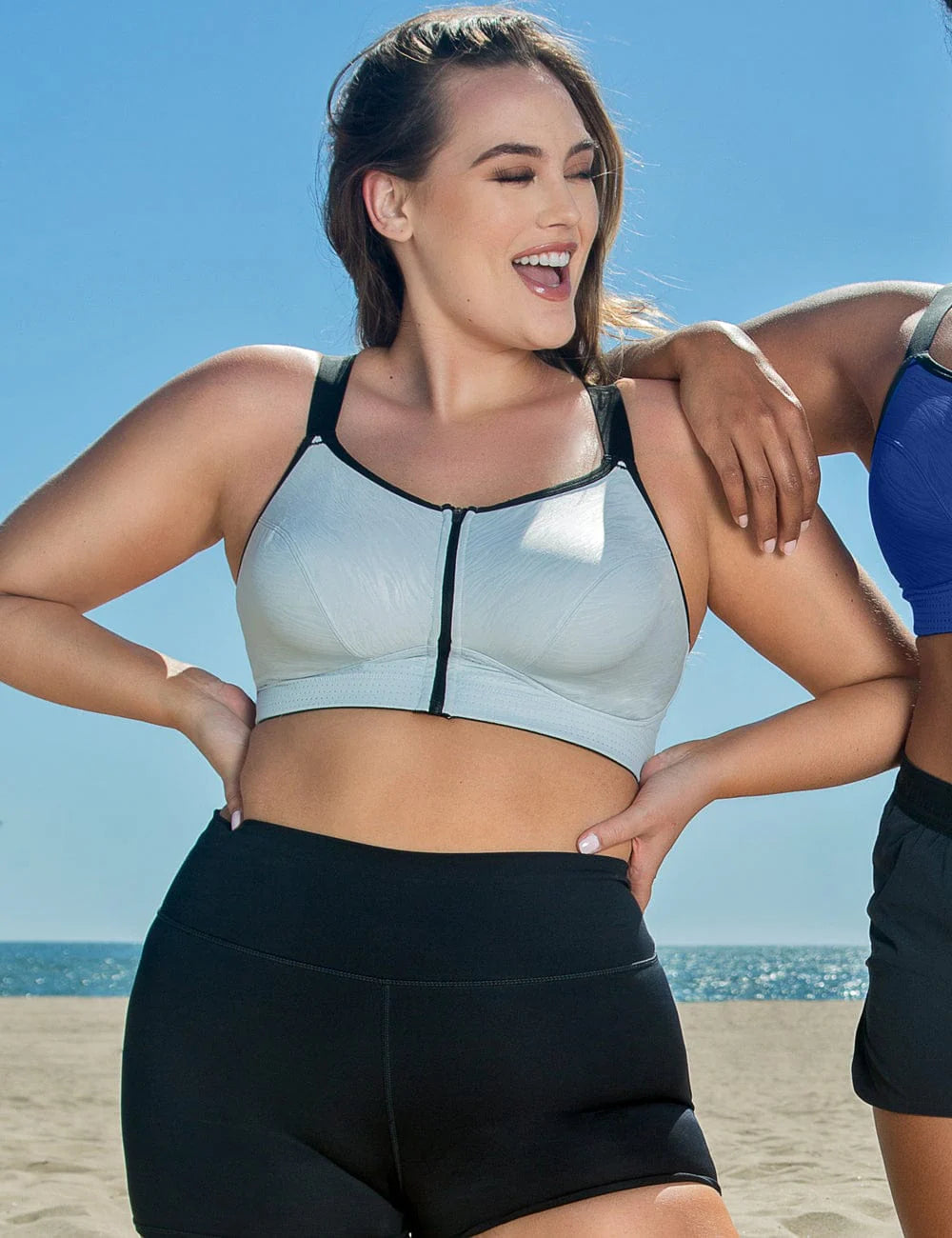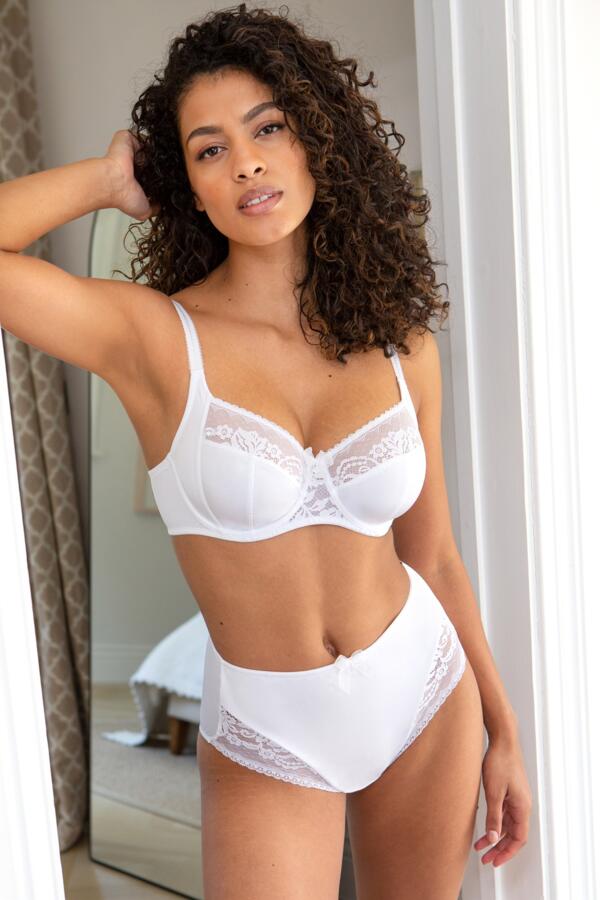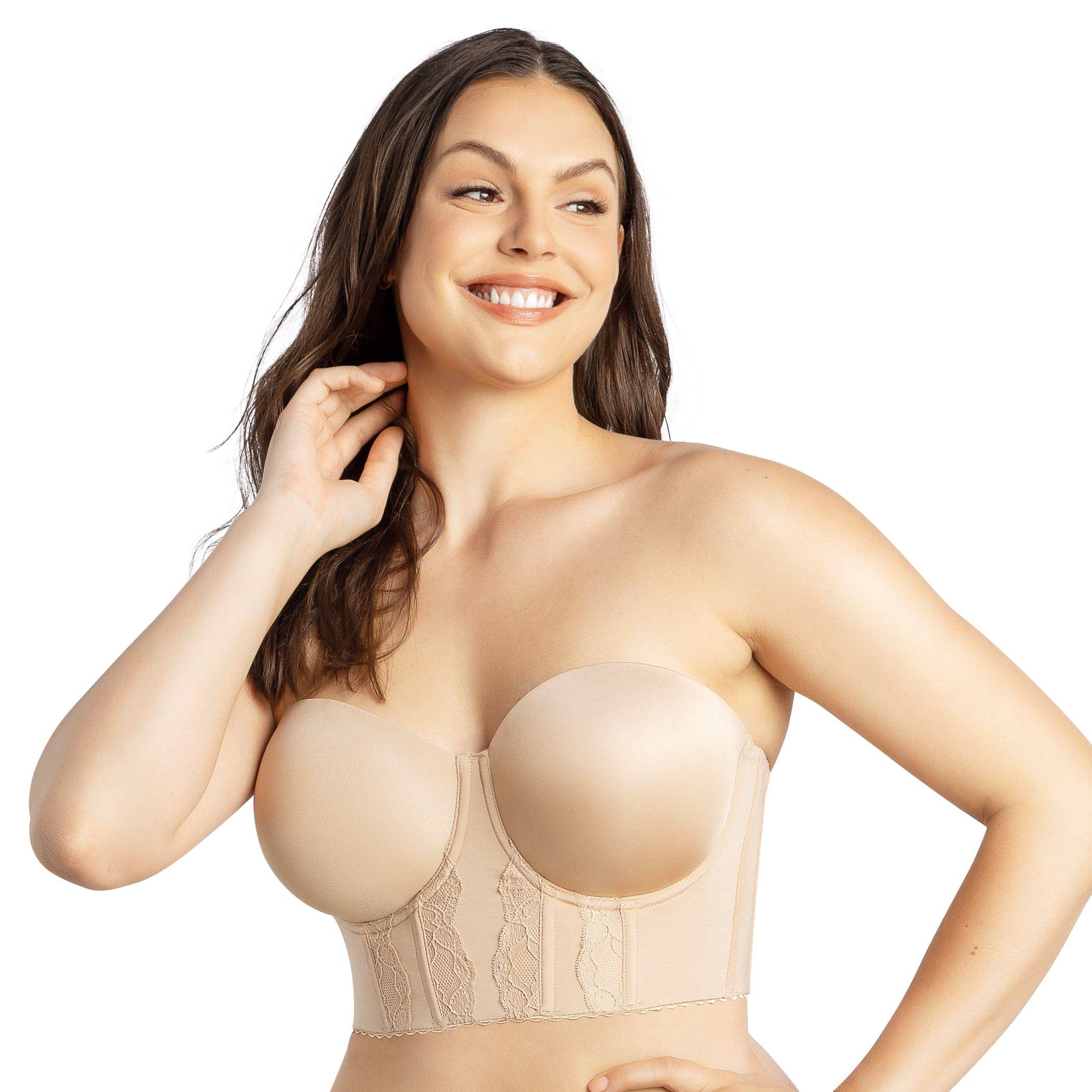Guide to Sports Bras for Large Breasts: Performance

Guide to Sports Bras for Large Breasts: Performance. For women with larger breasts, finding the right sports bra is more than just a fitness accessory—it’s a necessity. High-impact activities without proper support can lead to discomfort, chafing, and even long-term damage to breast tissue. At Olivia Paisley Intimates, we understand that the right sports bra provides support, reduces bounce, and allows you to move confidently—whether you're hitting the gym, running, or practicing yoga.
In this expert guide, we’ll explore the importance of sports bras for large breasts, the key features to look for, and tips for achieving the perfect fit for your active lifestyle.
Why Sports Bras Are Essential for Larger Breasts
Breasts lack muscle and rely on Cooper’s ligaments and skin for support. During physical activity, repetitive motion can stretch these ligaments, leading to sagging over time. For women with larger breasts, this effect is amplified without proper support.
Benefits of a Sports Bra for Large Breasts:
- Minimizes Bounce: Reduces breast movement by up to 80% during high-impact activities.
- Prevents Discomfort: Eases strain on the neck, shoulders, and back.
- Improves Performance: Provides stability and comfort, allowing you to focus on your workout.
- Protects Breast Health: Prevents tissue damage and long-term sagging caused by excessive movement.
Key Features to Look for in Sports Bras for Large Breasts
1. Encapsulation vs. Compression
- Encapsulation Bras: Feature separate cups to support each breast individually, providing superior lift and shape. Best for large busts and high-impact activities.
- Compression Bras: Press the breasts against the chest to minimize movement. Suitable for low to medium-impact workouts like yoga or Pilates.
2. Wide, Adjustable Straps
- Why It Matters: Wide straps help distribute weight evenly and prevent digging into the shoulders. Adjustable straps allow for a customizable fit.
3. Underband Support
- Why It Matters: A wide, elastic underband anchors the bra in place, ensuring stability and preventing ride-up during movement.
4. High Necklines and Full Coverage
- Why It Matters: High necklines and full-coverage designs reduce spillage and provide extra security during intense workouts.
5. Moisture-Wicking Fabrics
- Why It Matters: Sweat-wicking, breathable materials keep you cool, dry, and comfortable during workouts. Look for fabrics with antimicrobial properties to prevent odor buildup.
6. Padded or Molded Cups
- Why It Matters: Molded cups offer shape and support while reducing friction and chafing. Padding adds extra comfort for high-impact activities.
7. Racerback or Cross-Back Designs
- Why It Matters: Racerback styles provide additional lift and ensure straps stay in place during movement.
8. Hook-and-Eye Closures
- Why It Matters: Multi-row hook-and-eye closures allow for adjustable sizing, ensuring a snug fit as you move.
Types of Sports Bras for Large Breasts
1. High-Impact Sports Bras
- Best For: Running, HIIT, aerobics, and jumping exercises.
- Key Features: Encapsulation cups, padded straps, reinforced seams, and extra support.
2. Medium-Impact Sports Bras
- Best For: Cycling, hiking, or weightlifting.
- Key Features: Combination of compression and encapsulation for moderate support.
3. Low-Impact Sports Bras
- Best For: Yoga, Pilates, and walking.
- Key Features: Lightweight fabrics and compression designs for flexibility and comfort.
4. Zip-Front Sports Bras
- Best For: Quick on-and-off wear, especially after intense workouts.
- Key Features: Secure closures with added padding for comfort.
How to Find the Perfect Fit for Large Breasts
-
Measure Your Size Accurately
- Band Size: Measure around the ribcage, just under the bust.
- Cup Size: Measure around the fullest part of the bust and subtract the band size.
-
Perform the Movement Test
- Jump, Jog, and Stretch: Simulate workout motions to ensure the bra stays in place and minimizes bounce.
-
Focus on Band Fit
- The band should feel snug but not tight—it should stay in place even without the straps.
-
Adjust Straps and Closures
- Ensure the straps and closures offer flexibility for adjustments over time.
-
Look for Minimal Movement
- Breasts should move with your body, not independently, during activity.
Common Mistakes to Avoid
- Choosing the Wrong Size: Many women wear bras that are too loose in the band or too small in the cup. Always get professionally fitted.
- Neglecting Impact Level: A low-impact bra won’t provide adequate support for running or jumping activities. Match the bra to your workout.
- Ignoring Fabric Quality: Poor-quality materials lose elasticity over time, reducing support. Invest in durable, performance-grade fabrics.
- Overlooking Strap Design: Thin straps can dig in and cause discomfort. Opt for wide, cushioned straps for heavier busts.


